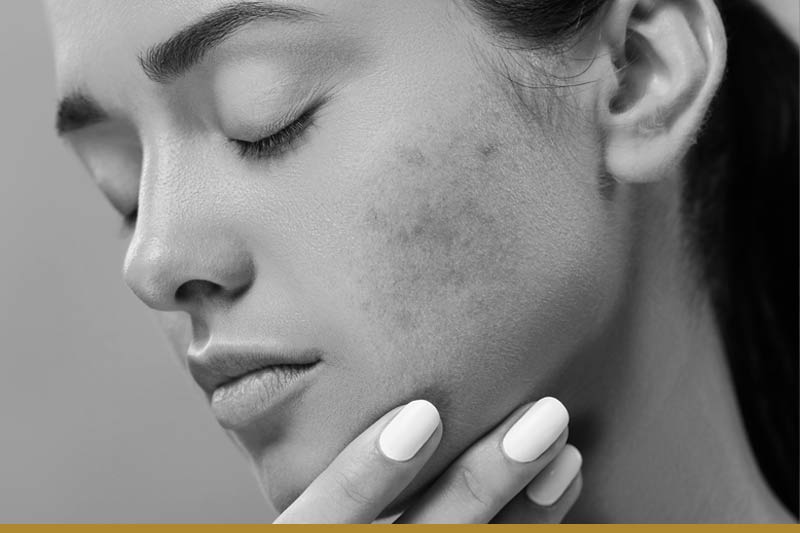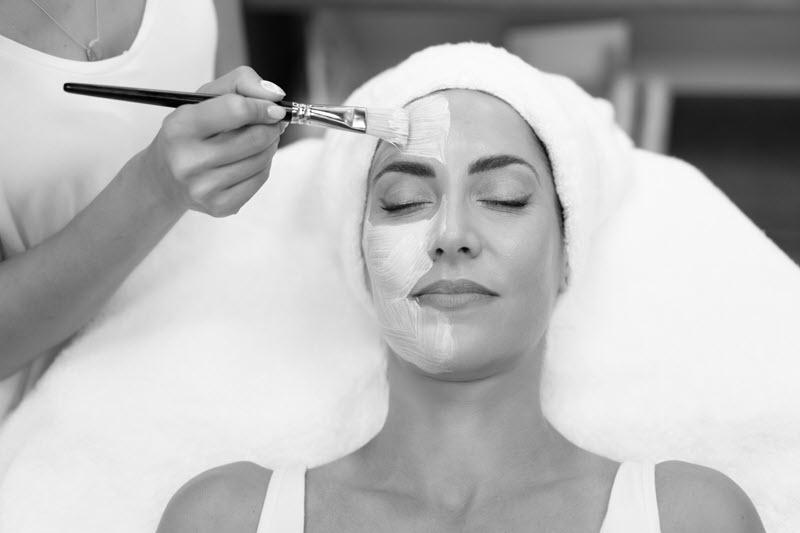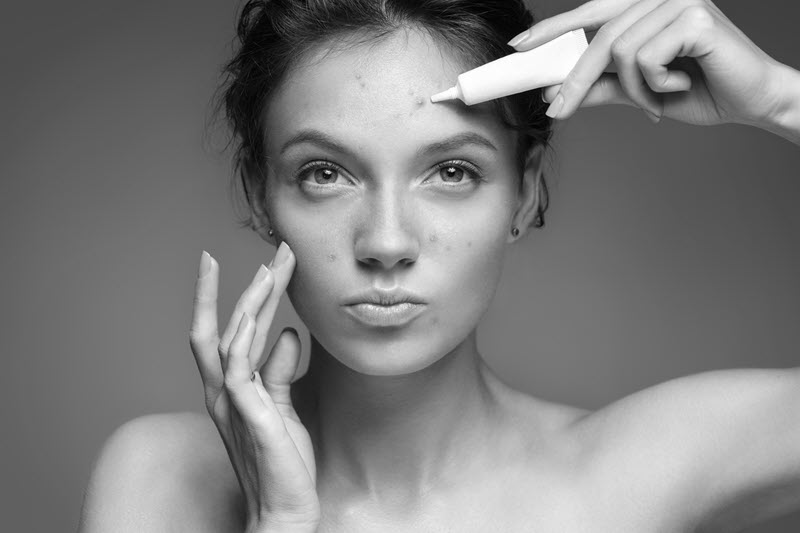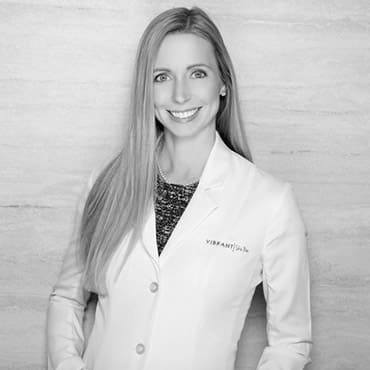Hormones are chemical messengers that send vital information through the bloodstream to regulate the activity of cells, tissues, and organs. Among other things, they influence the quality and health of the skin, the body’s largest organ. When hormones are out of balance, skin can flare up and break out in acne.
This article explains what causes hormonal imbalance acne and offers solutions to treat this problem.

Hormone fluctuations can cause acne or aggravate existing acne conditions, such as skin inflammation, excessive oil (sebum) production, and breakouts. Hormonal imbalance acne is a problem that occurs during puberty but can also affect adults. Women battle with it more frequently than men due to naturally occurring hormonal shifts (menstruation, pregnancy, menopause).
Hormonal acne occurs when there is a change on a hormonal level. One way to assess if acne is hormonal is to observe when it happens.
This type of acne typically occurs as a symptom of premenstrual syndrome (PMS), ovulation, polycystic ovary syndrome (PCOS), pregnancy, and menopause. It tends to reappear in the same area, in the lower parts of the face, such as the chin, the jawline, or the neck.
While hormonal acne can cause sebum overproduction and clogged pores, bacteria can worsen this skin condition by causing inflammation that manifests as red, swollen, cyst-like spots. If topical skin treatments don’t clear the breakout, the bacterial issue might require the use of oral antibiotics.
Consult a dermatologist to determine the root cause of your acne and decide on your next step.
Hormonal imbalances can stimulate sebaceous (oil) glands to produce excess sebum and clog pores, creating bumps on the skin called acne vulgaris. There are inflammatory and non-inflammatory types of hormonal acne.
Non-inflammatory acne is a mild skin lesion that over-the-counter (OTC) medications treat well:
Inflammatory acne is a severe skin condition that requires a medical treatment and supervision:
Note: Each type of hormonal acne requires a different treatment. Learn more about types of acne, their triggers, and the best treatments for each.

The rise of testosterone in puberty activates excess sebum production, increasing the chances of hormonal acne in teenagers. Teenage boys are more likely to develop hormonal acne because their bodies naturally produce more of this androgen (sex hormone).
In adulthood, acne affect both men and women due to hormonal fluctuations at different stages of life. However, women are more likely to experience flare-ups because their hormones naturally fluctuate more. These breakouts usually happen around their periods, during pregnancy, perimenopause, menopause. They can also appear as a side effect of birth control pills with progestin, a synthetic version of progesterone.
Acne appears when extra oil clogs the pores (hair follicles) and interacts with bacteria found in the skin micro flora. The following causes of hormonal imbalances can speed up this process:
Note: Learn more about what causes acne to appear.
Self-diagnosis is not a good idea and is potentially harmful, too. Expert medical advice is crucial when it comes to diagnosing the root cause of hormonal imbalance acne.
Note: Seek professional medical care to avoid further complications and scarring. Read about types of acne scars for more information.
If preventive measures don’t help, early treatment of hormonal acne is the next-best approach. Consult a dermatologist to keep acne under control and avoid post-inflammatory hyperpigmentation (PIH) or deep cysts that may leave permanent scars. Adequate and timely treatment can save years of futile struggling with hormonal imbalance acne.
Note: Prevention starts with a top-quality skincare routine. Get more information in the ultimate skin care guide and create the perfect routine for your skin.

A holistic skin care approach increases the likelihood of finding a lasting solution to hormonal imbalance acne. Consider these options with a dermatologist to secure a satisfying result:
Note: Our Acne Eraser Facial combines several of the techniques mentioned above and includes an aftercare regimen to help you say goodbye to acne for good.
If the root cause of your acne is that you are entering menopause, and you are looking for female hormone replacement therapy in Phoenix, don't hesitate to contact Vibrant Vitality Clinic. Our team of medical professionals will assess your skin's condition and design a solution tailored to your needs.
Results vary depending on the severity of hormonal acne and the chosen treatment. Acne with bacterial inflammation takes longer to heal. Some therapies, such as light therapy, photodynamic therapy, or chemical peels, require multiple sessions spread across several weeks. Topical OTC acne treatments take time and patience, while prescribed medications yield results within four to eight weeks.
Note: The battle against acne does not end with acne treatment. Even after successfully getting rid of acne, many people are left with visible scarring, which takes a toll on one's confidence. If you are considering acne treatment, prepare for the aftermath by learning about the best acne scar treatments.
Hormonal fluctuations, notably higher levels of androgens, cause both inflammatory and non-inflammatory acne in teenagers and adults. Clogged hair follicles or pores interact with dead skin cells and bacteria to create bumps and lesions on the skin’s surface.
There are multiple acne treatments at your disposal, from over-the-counter topical solutions to hormonal therapies. Schedule an appointment at Vibrant Vitality Clinic for a more comprehensive assessment of your skin type and treatment options.




4325 E Indian School Rd, Suite 130
Phoenix, AZ 85018
United States
(480) 422-2058
info@vibrantvitalityclinic.com
Monday - Friday: 9:00 am - 6:00 pm
Saturday: 9:00 am - 3:00 pm
Sunday: Closed
